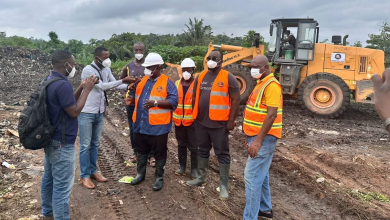
World Malaria Day is an occasion to highlight the need for continued investment and sustained political commitment for malaria prevention and control. It was instituted by the WHO Member States during the World Health Assembly of 2007.
The theme for this year’s commemoration is, “Harness innovation to reduce the malaria disease burden and save lives.”
According to the World Health Organization (WHO), no single tool that is available today will solve the problem of malaria. WHO is calling for investments and innovation that bring new vector control approaches, diagnostics, antimalarial medicines and other tools to speed the pace of progress against malaria.
Malaria is a preventable and treatable disease that continues to have a devastating impact on the health and livelihood of people around the world. In 2020, there were an estimated 241 million new cases of malaria and 627 000 malaria-related deaths in 85 countries. More than two-thirds of deaths were among children under the age of 5 living in the WHO African Region.
The Global technical strategy for malaria 2016–2030 was adopted by the World Health Assembly in May 2015. It provides a comprehensive framework to guide countries in their efforts to accelerate progress toward malaria elimination. The strategy sets the target of reducing global malaria incidence and mortality rates by at least 90% by 2030.
Despite steady advances in lowering the global burden of malaria between 2000 and 2015, progress has slowed or stalled in recent years, particularly in high burden countries in sub-Saharan Africa. Urgent and concerted action is needed to set the world back on a trajectory toward achieving the 2030 targets of the WHO global malaria strategy.
This updated version, endorsed by the World Health Assembly in May 2021 through resolution WHA74.9, reflects lessons learned in the global malaria response over the last 5 years. While the milestones and targets remain the same, the approaches to tackling the disease, in some areas, have evolved to keep pace with the changing malaria landscape.
Malaria is endemic and perennial in Ghana, with pronounced seasonal variations in the northern part of the country. The length of malaria transmission varies by geographic region, depending on the length of the dry season (December–March), during which there is a little transmission.
With 2% of global malaria cases and 3% of deaths, Ghana is among the 15 highest-burden malaria countries in the world. Between 2016–and 2019, however, Ghana made significant progress in malaria control – cases decreased by 32% (from 237 cases per 1000 of the population at risk to 161 cases), and deaths decreased by 7% (from 0.4 per 1000 of the population at risk to 0.37).
To reduce the burden of malaria in the country, the high burden, high impact approach was introduced in Ghana in November 2019.[1]
READ ALSO:https://beachfmonline.com/w-r-bliss-gvs-donates-to-effia-nkwanta-regional-hospital/
Ghana has achieved the highest rate of two doses of intermittent preventive treatment in pregnancy (IPTp2) for pregnant women in sub-Saharan Africa – 78% in 2016 and 80.2% in 2019. The percentage of pregnant women receiving the third dose of IPTp (IPTp3) also increased from 39% to 60% between 2014 and 2016, and 61% in 2019 [1]
As a result of improved access to testing, the reported rates of malaria cases in children under five have gradually risen from 12% in 2016 to 33% in 2017.

Although 73% of households owned at least one insecticide-treated net (ITN) in 2016, usage rates were noted to be lower. For instance, net use among pregnant women and children under five was 52% and 50%, respectively, in the same year.
-World Malaria Day




